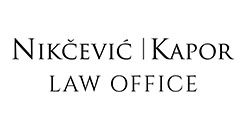The draft of Serbia's new Trademark Act strives to remove shortcomings in the existing trademark legislation and further harmonize Serbian laws with those of the European Union.
General
Trademark protection in Serbia is currently regulated by the Trademark Act ("Official Gazette of the Republic of Serbia", nos. 104/09 and 10/13). Recognizing the need to further adjust and harmonize Serbian legislation with the European Union's IP legal framework, as well as to remedy the identified shortcomings of the existing Trademark Act, Serbia's legislator has prepared a Draft for a new Trademark Act [the "Draft Law"].
Opposition system introduced
Key innovation envisaged by the Draft Law concerns the introduction of a trademark opposition system, which will replace the current ex officio examination of the relative grounds for refusal. This essential change will bring Serbian legislation more inline with what is already a well-established standard for most of the country's neighbouring states, other European countries, and the community trademarks (by virtue of Council Regulation (EC) no. 207/2009).
Under the Draft Law, Serbia's Intellectual Property Office will conduct formal examinations solely on absolute grounds, while the substantive examination on relative grounds will rest within the discretion and attentiveness of rightholders. In accordance with the proposed change, the holder of an earlier trademark or a well-known trademark, licensee or the holder of an earlier right to a name or image, copyright or industrial property right will be able to file opposition based on relative grounds for refusal within three months from the application publication date.
More effective court protection
Further changes envisaged under the Draft Law come as a consequence of the obligation to comply with Directive 2008/95/EC on the approximation of the laws of the Member States related to trademarks. The aim is to establish a more efficient trademark protection system, eliminate the identified ambiguities and facilitate the application of civil procedure law provisions in order to promote more effective protection in infringement cases. The proposed changes include more precise definitions of possible claims, as well as clearer and more systematic provisions on interim measures and effective measures on securing evidence.
Crucial revision of the statute of limitation
Another key amendment concerns the statute of limitation for bringing a claim against trademark infringement under the civil law track. The earlier solution was rather defective and not viable, as it prescribed that the statutory deadline for bringing an action is 3 years from the moment the rightholder became aware of the infringement and the infringer (subjective deadline) and not longer than 5 years from the date the infringement first occurred (objective deadline). Based on such definition, rightholders were unable to prevent and oppose ongoing infringements if the five-year deadline had already passed (even if the rightholder had no knowledge of the infringement). The Draft Law seeks to remedy this major flaw by removing the word "first" from the statute of limitations definition, thus ensuring that a claim for ongoing infringements cannot become outdated.
Timeframe for Draft Law's adoption still open
Although the Draft Law has been up for public discussion since 3 December 2015 and was expected to enter the parliamentary procedure at some point in January 2016, its current status remains unknown. The adoption procedure seems to have been postponed for now and the Draft Law remains open for comments and suggestions. Currently, the Intellectual Property Office is expected to host at least one more roundtable for IP experts before producing a final draft. The adoption of the Draft Law may, therefore, be expected by the middle of 2016.
By Andrea Radonjanin, Attorney at Law, and Petar Luka Barisic, Associate, Schoenherr






























